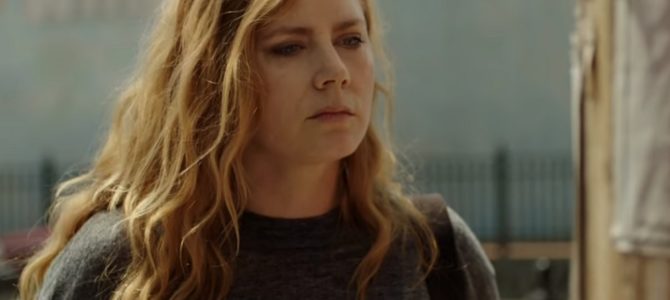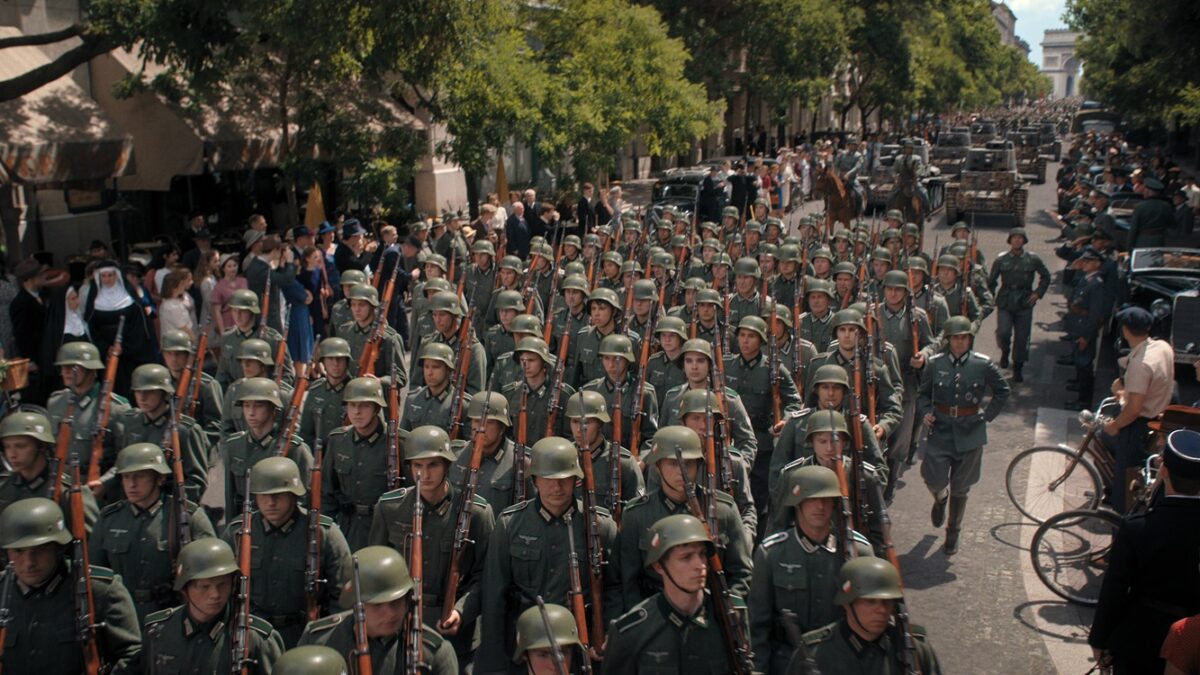
Regardless of how you assess the Gillian Flynn corpus, the woman has a knack for crafting captivating female villains. In “Gone Girl,” it was vengeful Amy Elliot Dunne, a displaced New Yorker with a wall full of Ivy League degrees and a pesky habit of framing her significant others for rape and murder.
In “Sharp Objects,” the novel recently adapted for prestige TV, it’s Adora Crellin: an aging Southern belle who angelically floats through her small town doing good for the poor while neglecting her hapless husband and nursing a few dark obsessions—including inexplicable hatred for her daughter, Camille Preaker.
Preaker, played in the HBO series by Amy Adams, is another of Flynn’s female triumphs. Like her name—a combination of mellifluous French syllables and a cacophonous word evoking both “break” and “bleak”—she is a woman of contradictions, smug and self-assured one moment and a complete wreck the next.
A journalist at the St. Louis Chronicle, she has perfected the art of “getting through the day”: If the main course at most of her meals is vodka, and if carving bloody words into her body is her preferred way to relax, it is merely because this is how she’s managed to keep from cracking since childhood, when a mysterious illness killed her little sister, Marian. Yet despite the alcoholism, the routine cutting, the sex addiction, we fall helplessly in love with Camille.
For forging a life of her own choosing, for leaving behind her mother’s benighted world, she endears herself to us from episode one as the story’s self-made hero. But is it really possible to make such a clean break with one’s history? “Sharp Objects” begins as a straightforward thriller, but ends up tackling our age’s tendentious relationship with its past—and the futility of our attempts at self-determining autonomy.
Cope With This
Camille’s coping mechanisms are put to the test when the Chronicle’s editor sends her back to her hometown of Wind Gap, Missouri, to cover the murder of Ann Nash—a 13-year-old found strangled with all her teeth plucked out. Shortly after Camille arrives, another girl, Natalie Keene, also turns up dead, her bloody mouth exhibiting similarly gruesome dentistry.
It’s not a particularly healthy assignment for Camille, who grapples with keeping repressed memories repressed and chronic depression under control. Her mind, already slightly unhinged when she arrives in Wind Gap, begins to slip ever more fluidly between past and present in a psychedelic flow of flashbacks dexterously commandeered by director Jean-Marc Vallée.
It could be the vodka playing tricks—Camille is rarely without a trusty water bottle of Absolut—but it could also be the fact that Camille’s teenage half-sister Amma reminds her so much of Marian. Or it could be the menacing disapproval from Adora, whose presence conjures up a barrage of traumatic childhood ghosts. “I never loved you,” Adora confesses to her daughter halfway through Camille’s visit.
Wind Gappers—Adora in particular—put a sinister spin on “Southern hospitality.” Clues suggest the murderer is a local, but what kind of town rears a person who not only strangles little girls but pulls out their teeth with pliers, molar by molar? As Camille extends her stay, her hunt for the killers becomes another kind of search: an attempt to discover what differentiates Wind Gap’s humans from the hogs teeming in their slaughterhouses.
A Surface of Clichéd Hatred for Country Folk
“Sharp Objects,” like Flynn’s previous thrillers “Gone Girl” and “Dark Places,” is a tale of small-town kids who grow up, move to the big city, and attempt to shun their parents’ ways. Missouri’s boot heel is a caricature of what New York-D.C. Corridor dwellers imagine flyover country to be like: Wind Gappers are fundamentalist evangelicals (“I’d rather him kill her than rape her,” the father of dead Ann Nash says of his daughter’s murderer), and unabashedly racist.
Each year, the town celebrates “Calhoun Day,” a fete thrown not in honor of John, but of Zeke Calhoun, Wind Gap’s Civil War hero, with revelry involving gray uniforms, Confederate flags, and pageants reenacting the grotesque deeds of Union soldiers.
In short, “Sharp Objects” seems to affirm what Big City dwellers already know: In Trump country, idiot cheerleaders, mysogynistic farmers, and dimwitted homemakers run rampant, gossiping about town “faggots” and judging every wife who doesn’t have at least four children. Coastal elites love this sort of thing: It gives them a chance to pat themselves on the back while indulging disgust for backward deplorables.
Life is messy in Wind Gap, and I found myself breathing a sigh of relief when the barbed wire fences and squealing pigs occasionally gave way to comforting urban traffic and the minimalist decor of Camille’s St. Louis apartment, with its sensible posters of Barack Obama and Gloria Steinem. The murders, the rapes, the psychos that crop up in each of the show’s eight episodes help us city-dwellers confirm all our preconceived stereotypes, making us feel better about our more enlightened, civilized selves: We were right.
Camille thinks we’re right, too. In one of the show’s earliest scenes, when her editor asks what Wind Gap folks are like, Camille offers two categories: “You got your old money and your trash.” She herself is “trash—from old money,” but what she really means is that she’s a runaway rebel, an independent thinker who scorns Missouri stereotypes altogether. We applaud her for being different, uncontainable, smarter, sharper; when asked if she’s from Wind Gap, she replies in the negative: “Used to be. I’m up in St. Louis now.”
Critiquing City Folks’ Prejudice, As Well
In Wind Gap, females can either be dolls, “good little girls”—or be denounced as rebels. Like Camille, the butchered Ann and Natalie didn’t conform to the town’s stereotypes. Ann was “willfull,” Natalie “was just completely herself.” “The town hated her for that,” her brother John tells Camille.
In the end, the girls end up as dolls anyway: limp rag dolls left slumped throughout the town with bloody stumps where teeth used to grow. Vallée hits us over the head with Camille’s own doll-likeness by strategically placing Amma’s dollhouse, a replica of the family’s real-life house, in many of Adams’s scenes.
Can a person stop being “from” the place she was born? Initially, Camille appears to be the rescuer, the intrepid journalist whose clearer vision and dislike for her benighted hometown will enable her to find the killer and save future victims. But though Camille wants to blame all her troubles on her family and hometown, she never quite succeeds in leaving them behind.
She deplores the way Wind Gap’s males objectify their women, but seems to have no qualms about using men for sex. After insisting to Adora that she “never gets close,” she gets too close to multiple people—each time with unfortunate consequences. Despite her vow to deliver justice to Ann and Natalie, she ends up as blindsided as Wind Gap’s less educated citizens—even, by the finale, unwittingly complicit with the murderer. And although she vows to be different from the loveless Adora, she ends up cheating on and deeply wounding the one man who offers her tenderness.
When the guy she’s seeing, Detective Richard Willis, catches Camille with another man in a one-afternoon-stand of supposed self-discovery, he offers persuasive analysis. “I think one bad thing happened and you blamed the rest of your sh-tty life on it,” he accuses her. “People really buy it, your sad story. But really, you’re just a drunk and a slut.” Perhaps Camille isn’t quite the champion of authenticity she thought.
Vallée’s dollhouse symbolism is heavy-handed, but it gets the message across. Even when Camille returns to St. Louis, the sinister facade crops up in the show’s final scene, a reminder that even here she hasn’t broken away from her past.
In “Sharp Objects,” Flynn captures something of our modern quest to escape history, and though she admits the past isn’t pretty, she also suggests we won’t find anything better by shirking it. The series begins as merely an invitation to denounce the show’s deplorables, but it concludes by asking whether those who scorn them are so much better off.









